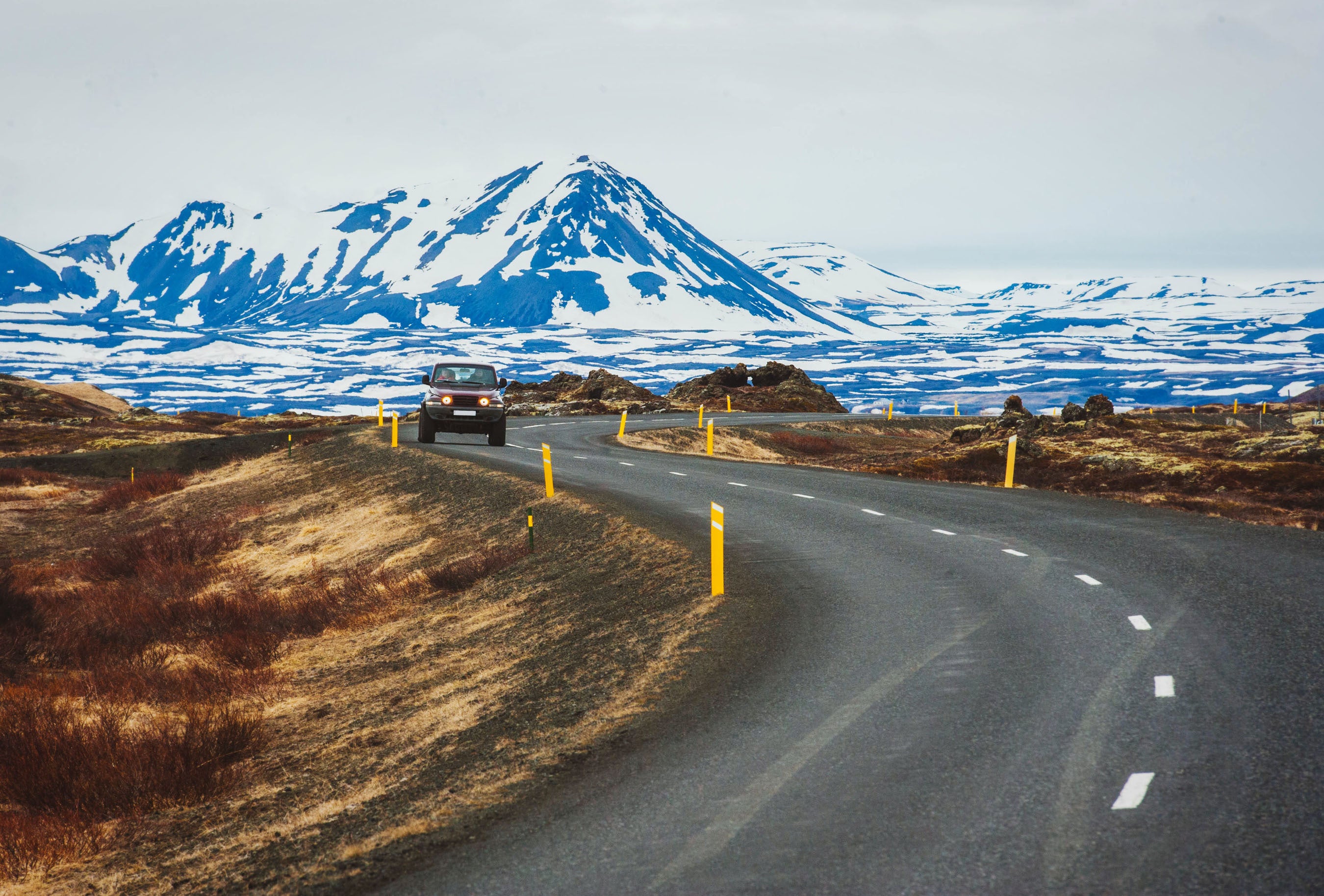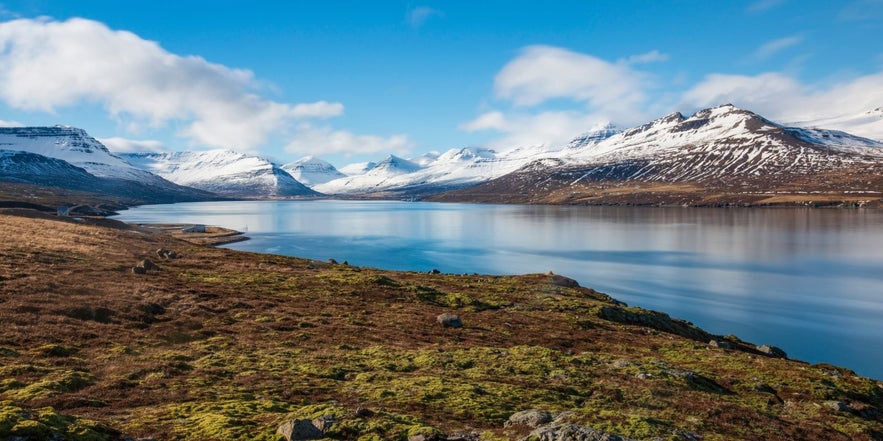
Discover the best places to visit in East Iceland and begin your journey into one of the country’s most peaceful and breathtaking regions. Iceland’s quiet Eastfjords are filled with dramatic fjords, colorful villages, and hidden gems that create an experience unlike anywhere else.
East Iceland stretches between Bakkafjordur in the north and Hofn in the south. The region covers 8,773 square miles (22,721 square kilometers) and is home to just 11,000 people. Egilsstadir is the largest town, and the slower pace of life here contrasts with the bustle of Reykjavik and the South Coast.
Why You Can Trust Our Content
Guide to Iceland is the most trusted travel platform in Iceland, helping millions of visitors each year. All our content is written and reviewed by local experts who are deeply familiar with Iceland. You can count on us for accurate, up-to-date, and trustworthy travel advice.
Eastfjords tours showcase rugged mountains, black sand beaches, and fishing villages along winding coastal roads. Djupivogur shore excursions add cultural landmarks, artistic sites, and sweeping views of the fjords, offering insight into both local life and the landscape.
For flexibility, self-drive tours let you explore East Iceland at your own pace. To experience the landscape more closely, a horse riding tour in East Iceland takes you through valleys, fields, and mountain trails on the sure-footed Icelandic horse.
East Iceland is a land of space, scenery, and heritage, where every route and village has its own story. Read on to discover the must-visit stops that bring the region to life.
Key Takeaways
-
East Iceland offers dramatic fjords, mountains, glaciers, and charming villages.
-
Must-sees include Vestrahorn Mountain, Studlagil Canyon, Vatnajokull National Park, and the Wilderness Center.
-
Egilsstadir is the best town to stay in, with easy access to attractions and amenities.
-
Spend 4 to 5 days exploring East Iceland’s highlights, nature, and culture.
- Plan your trip: The Ultimate Guide to Iceland's Eastfjords
- Driving tips: Ultimate Guide To Driving in Iceland
- More travel inspiration: Planning a Ring Road Trip in a Campervan
Top 11 Attractions in East Iceland
When traveling around the East of Iceland, you will find a plethora of natural wonders among the region's tranquil fjords. Here are the top 11 places to add to your Eastfjord itinerary.
11. Viti Crater Lake in Askja
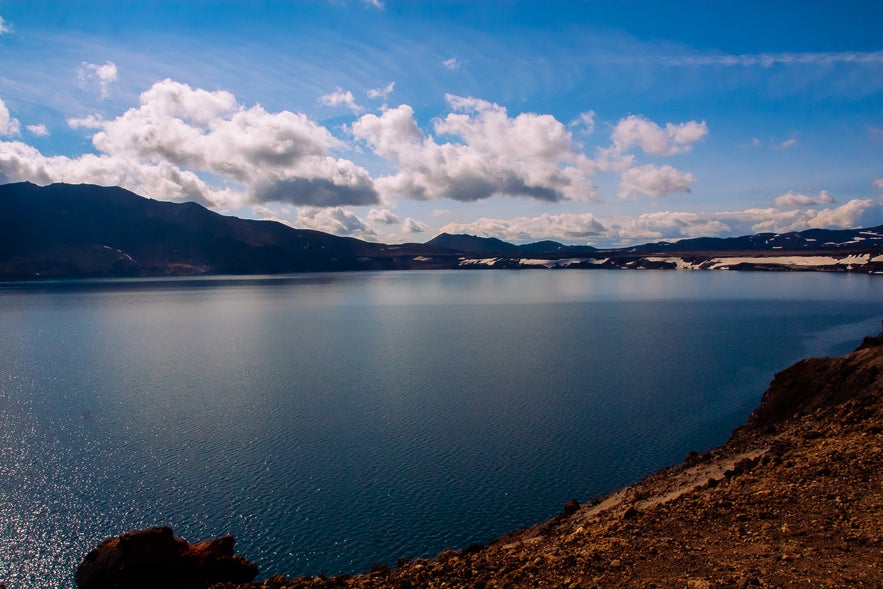 Viti Crater Lake sits in the Askja Caldera, a 19.3 square-mile (50 square-kilometer) depression in the Dyngjufjoll Mountains. This caldera formed when a magma chamber collapsed at the end of the last glacial age, creating a large, circular gap.
Viti Crater Lake sits in the Askja Caldera, a 19.3 square-mile (50 square-kilometer) depression in the Dyngjufjoll Mountains. This caldera formed when a magma chamber collapsed at the end of the last glacial age, creating a large, circular gap.
Ever since, Askja caldera has continued to fill with water, forming a 721.7-foot (220-meter) deep lake named Oskjuvatn, the second-deepest inland lake found in Iceland. This high-altitude lake is normally covered with a thick layer of ice, except during the height of summer.
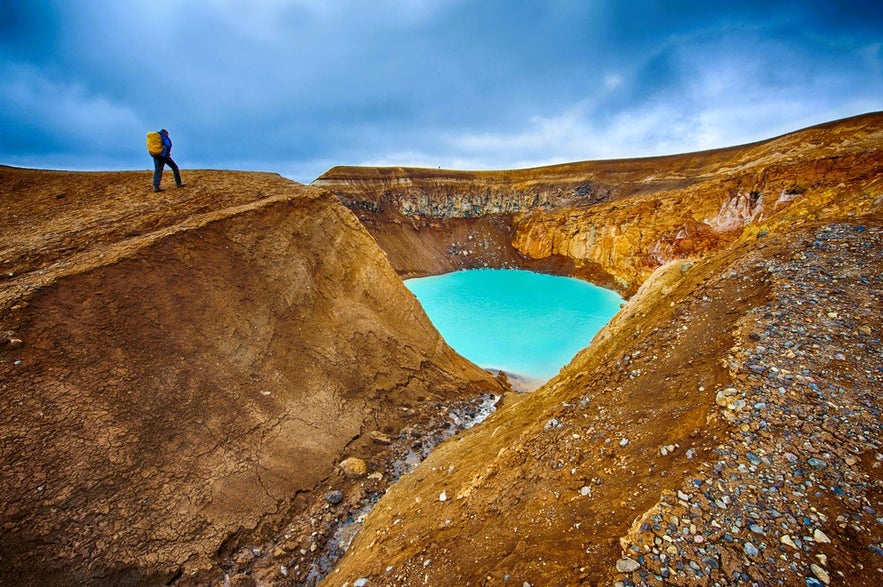 To reach it, visitors must hike for up to an hour across the black sand dunes surrounding the Askja Caldera. You'll then admire the bright blue water and stunning views from the crater edge.
To reach it, visitors must hike for up to an hour across the black sand dunes surrounding the Askja Caldera. You'll then admire the bright blue water and stunning views from the crater edge.
In summer, Viti Lake is suitable for swimming, offering a unique Icelandic bathing experience in a volcanic crater. If you plan to visit, you'll need a 4x4 jeep as it's located in the Highlands region with only gravel roads leading to it.
If you prefer to skip the drive, you can also join this super jeep tour to Askja Caldera from Lake Myvatn.
10. Hallormsstadarskogur Forest
 There’s an old joke in Iceland:
There’s an old joke in Iceland:
How do you find your way out of an Icelandic forest?
Just stand up!
Culturally, the joke makes sense because Iceland was deforested long ago and stayed like that for a while, largely due to timber overuse during the settlement era.
It is believed that Iceland lost most of its forests within a century of the first settlers' arrival, and ongoing soil erosion has only worsened the situation since then.
Today, the common saying that there are no trees in Iceland is not completely true. Since the mid-20th century, Iceland has embarked on ambitious reforestation efforts with a strong emphasis on sustainable practices.
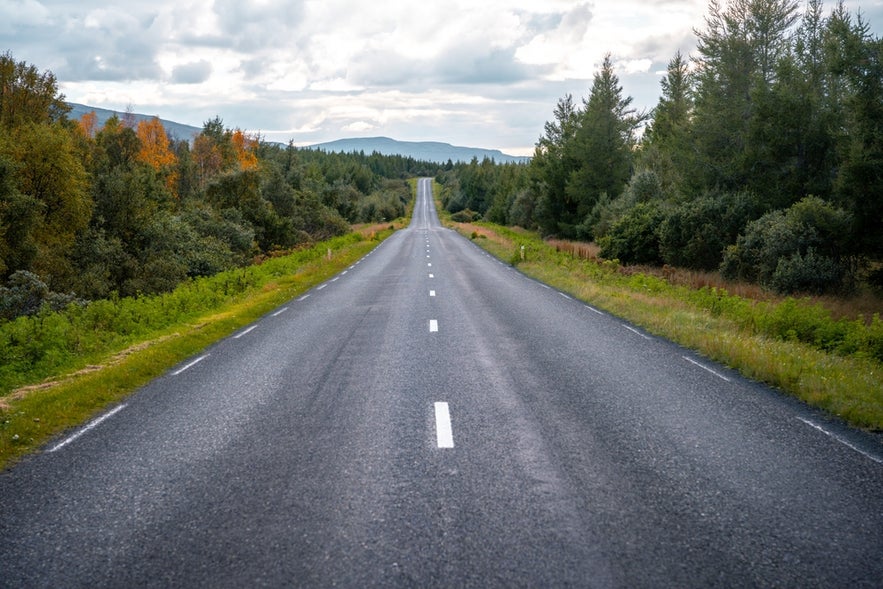 This is partly what makes the Hallormsstadaskogur National Forest a must-visit location in East Iceland. It's Iceland’s largest forest, located just 14 miles (22.7 kilometers) away from the town of Egilsstadir.
This is partly what makes the Hallormsstadaskogur National Forest a must-visit location in East Iceland. It's Iceland’s largest forest, located just 14 miles (22.7 kilometers) away from the town of Egilsstadir.
In 1905, Hallormsstadarskogur was granted governmental protection as Iceland’s first official forest, which now spans 1,829 acres (740 hectares) and is home to over 85 tree species.
Hallormsstadaskogur Forest is a saving grace of Iceland’s birdlife, providing food, shelter, and nesting for a wealth of species. During summer, you may see redwings, Eurasian woodcocks, snipes, and meadow pipits. Yearlong residents include ravens, common redpolls, wrens, and goldcrests, amongst others.
There are many walking and hiking paths through the forest, as well as cycling paths, a campground, and a frisbee golf course. The forest can also make for the perfect stop for a picnic break during your travels.
- Learn more: Birds in Iceland
- See also: The Forests of Iceland
9. Lagarfljot Lake
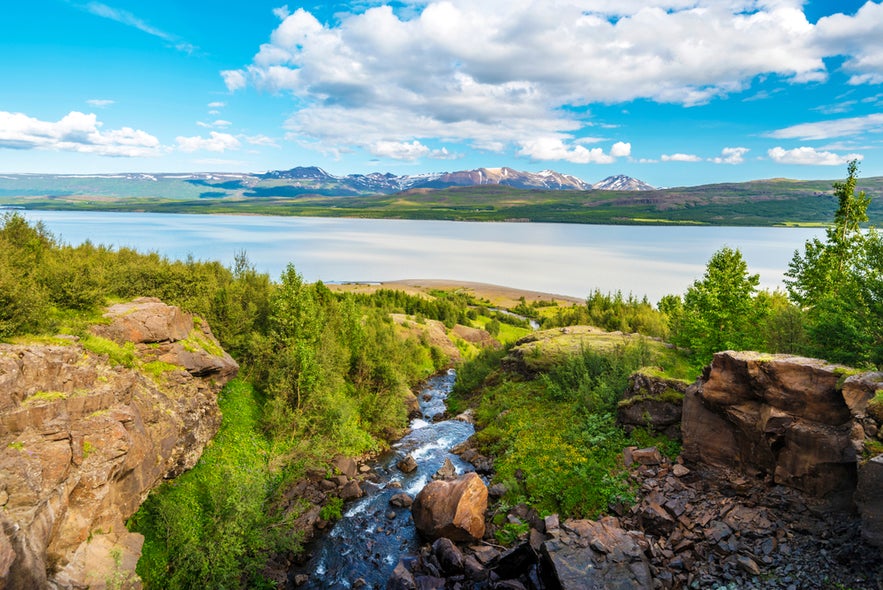 When visiting Hallormsstadarskogur Forest, take the time to see Lagarfljot Lake, also known as Logurinn, a 20-square-mile (53-square-kilometer) lake. Popular amongst guests to the region, the 87-mile (140-kilometer) Lagarfljot River runs directly through the lake, which measures 1.5 miles (2.5 kilometers) at its widest.
When visiting Hallormsstadarskogur Forest, take the time to see Lagarfljot Lake, also known as Logurinn, a 20-square-mile (53-square-kilometer) lake. Popular amongst guests to the region, the 87-mile (140-kilometer) Lagarfljot River runs directly through the lake, which measures 1.5 miles (2.5 kilometers) at its widest.
Icelandic folklore dictates that Lagarfljot is home to a cryptid, serpent-like creature known as Lagarfljotsormurinn, which translates to "the Lagarfljot Wyrm." This lake monster is thought to live at the depths of the lake, appearing every few decades or so, thus signifying ill-fate for the local population.
One of the most recent and widely discussed sightings dates back to 2012, when a video surfaced claiming to show the Lagarfljot Wyrm swimming along the lake’s surface. The footage, recorded by a local at Hrafnkelsstadir Farm in Fljotsdalur Valley, went viral, making international headlines and gaining over 5 million views on YouTube.
However, stories of the creature go back much further. One of the earliest reported sightings dates to the 14th century, when witnesses claimed it breached the water and rose high enough for a ship with full sails to pass beneath it. By the 17th century, the legend had grown stronger, with over 14 sightings reported by local travelers.
- See also: Folklore in Iceland
- Learn more: Lakes in Iceland
8. Hengifoss Waterfall
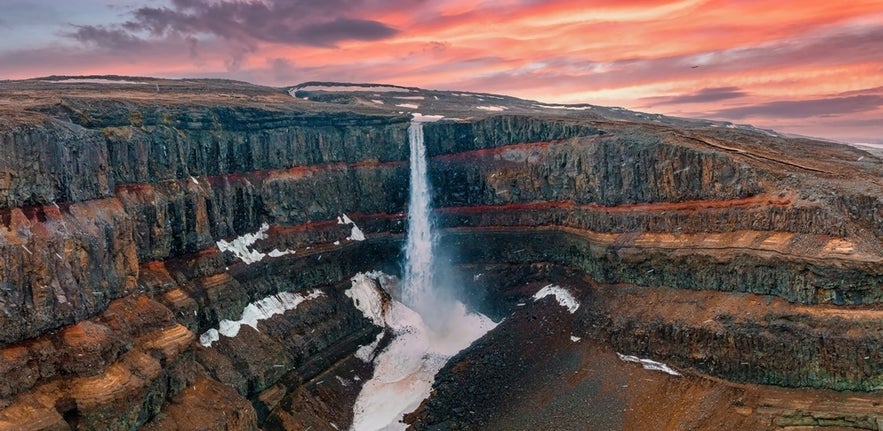 Measuring 500 feet (128 meters) high, Hengifoss is Iceland’s third-highest waterfall, most famous for the black and red basalt rock wall behind the falling water. The distinctive red color comes from clay that has formed between the basaltic strata. These layers are called "paleosols" in soil science and have no chemical relationship to modern vegetation.
Measuring 500 feet (128 meters) high, Hengifoss is Iceland’s third-highest waterfall, most famous for the black and red basalt rock wall behind the falling water. The distinctive red color comes from clay that has formed between the basaltic strata. These layers are called "paleosols" in soil science and have no chemical relationship to modern vegetation.
A story from The Folklore Collection of Jón Árnason, first published in 1862-1864, mentions that elves once inhabited the gorge around Hengifoss, known as Hengifossargil. The story is set on New Year’s Day and follows two men as they travel through the gorge.
From an unseen location, the two men heard a hymn as if the rocks themselves were singing it. At the end of the hymn, the two men heard a mysterious bell chime and quickly went on their way so as not to disturb the region’s hidden folk.
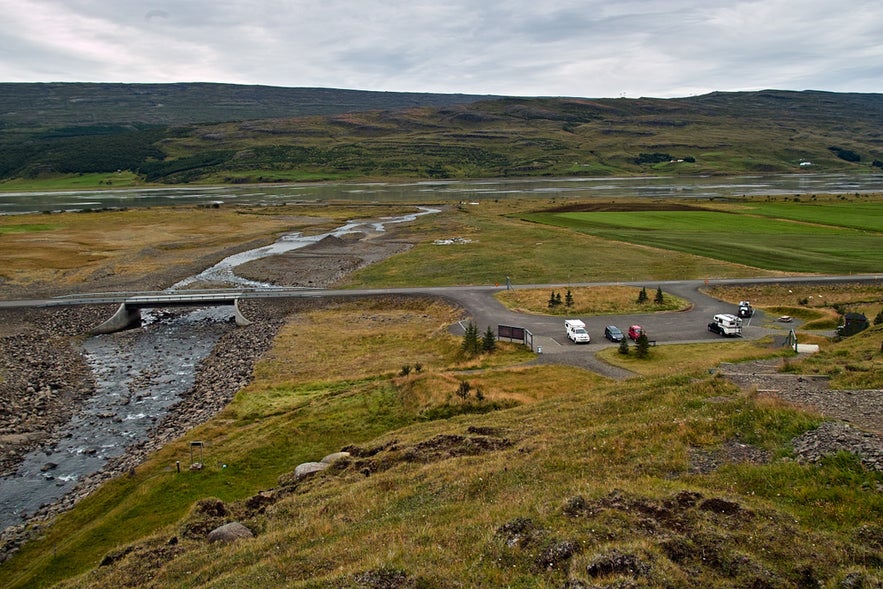 The car park by Hengifoss Waterfall is located at the beginning of a 1.5-mile (2.5-kilometer) hike, so depending on the season, bring a pair of sturdy walking boots and warm clothing. The hike is uphill and takes roughly an hour, so be sure to allow enough time to avoid feeling rushed.
The car park by Hengifoss Waterfall is located at the beginning of a 1.5-mile (2.5-kilometer) hike, so depending on the season, bring a pair of sturdy walking boots and warm clothing. The hike is uphill and takes roughly an hour, so be sure to allow enough time to avoid feeling rushed.
The waterfall is in the municipality of Fljotsdalur on the Hengifossa River, right next to Lake Lagarfljot.
Further down the river flowing from Hengifoss is another waterfall, the 114.8 feet (35 meters) high Litlanesfoss Waterfall, also known as Studlabergsfoss. This waterfall is particularly notable for the hexagonal basalt columns that surround the falls. Nature enthusiasts can easily see both of these beautiful waterfalls during their hike along the Hengifossa River.
7. Bulandstindur
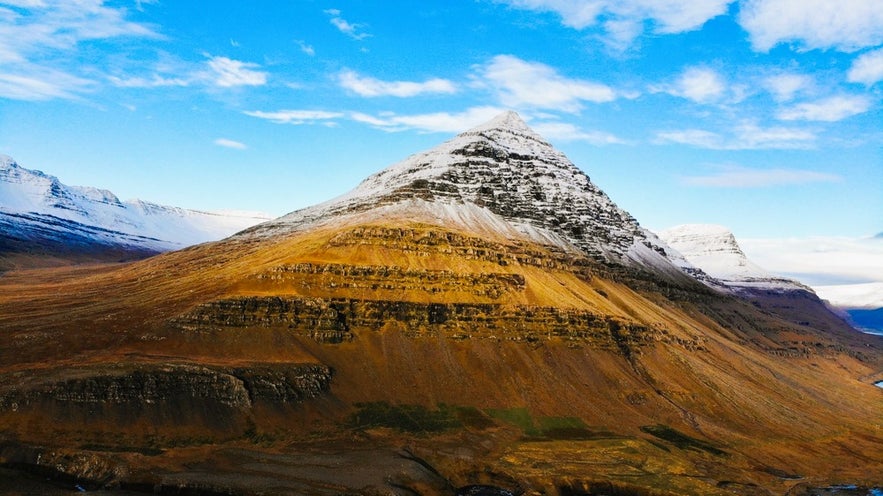 The pyramid-shaped Bulandstindur Mountain is considered by many to be one of the most beautiful mountains in Iceland. The mountain’s distinctive shape comes from the visible layers of basaltic strata, formed and sculpted over 8 million years.
The pyramid-shaped Bulandstindur Mountain is considered by many to be one of the most beautiful mountains in Iceland. The mountain’s distinctive shape comes from the visible layers of basaltic strata, formed and sculpted over 8 million years.
For those eager to explore, Bulandstindur Mountain offers several hiking trails of varying difficulty, all leading to breathtaking views from the summit. Standing at 3,507 feet (1,069 meters), the peak rewards hikers with panoramic vistas over the fjords of Berufjordur, Hamarsfjordur, and Alftafjordur.
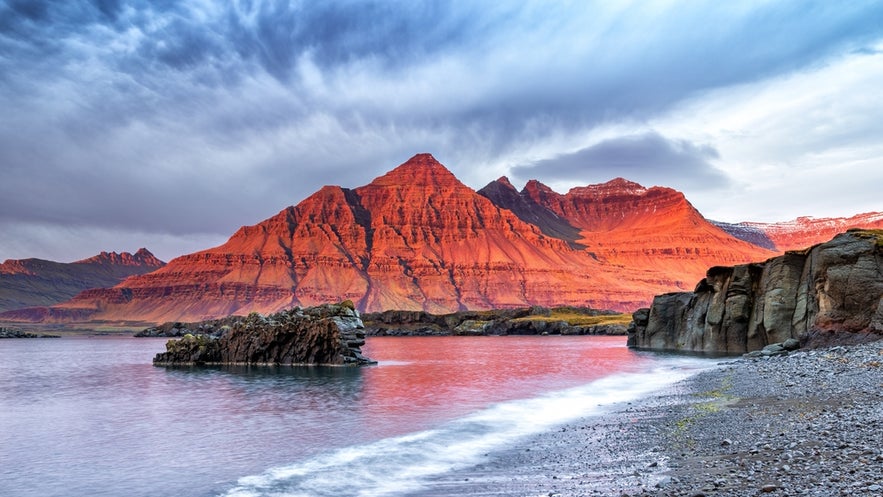 The mountain is especially captivating at sunrise, when the soft light highlights its sharp ridges and surrounding landscapes. Beyond its natural beauty, Bulandstindur is deeply rooted in Icelandic folklore, particularly around a cliffside known as Godaborg.
The mountain is especially captivating at sunrise, when the soft light highlights its sharp ridges and surrounding landscapes. Beyond its natural beauty, Bulandstindur is deeply rooted in Icelandic folklore, particularly around a cliffside known as Godaborg.
The name refers to an event believed to have taken place shortly after Iceland’s Christianization in 1000 A.D. According to legend, a group of chieftains known as the “Godar” climbed the steep slopes of Bulandstindur and cast their pagan idols from the summit, symbolizing the nation’s transition from old beliefs to Christianity.
Another folktale speaks of a sacred pool at the Godaborg cliffside, where the innards of sacrificed animals were washed as offerings to pagan gods. Over time, the mountain gained a reputation as a source of mystical energy, inspiring poets, artists, and spiritual seekers alike.
- See also: Mountains in Iceland
6. Laugavellir Hot Natural Waterfall
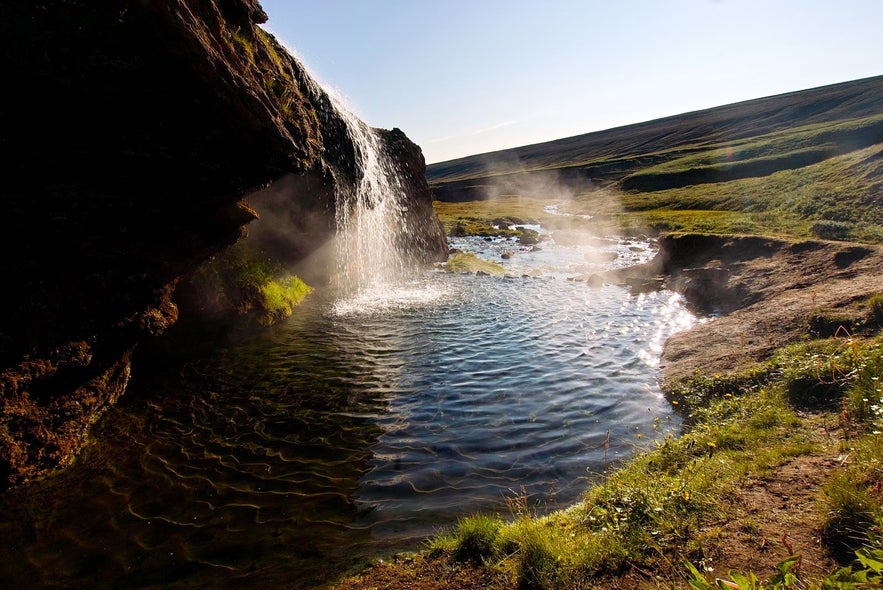 Laugavellir, or Laugavallalaug, is a remote geothermal hot spring and waterfall found in the northeast region of the Highlands of Iceland. The pool’s temperature ranges between 102-105 F (39-41 C) but can fluctuate with the weather.
Laugavellir, or Laugavallalaug, is a remote geothermal hot spring and waterfall found in the northeast region of the Highlands of Iceland. The pool’s temperature ranges between 102-105 F (39-41 C) but can fluctuate with the weather.
If the air is chilly and it's very windy, the water may be a bit too cold for bathing. Always check the temperature with a fingertip before jumping in.
The geothermal pool sits at 1,969 feet (600 meters) in the eastern Highlands, surrounded by lush vegetation.
Laugavellir is still rather hard to access, which is a blessing in disguise, as it cannot handle much traffic. The area is only accessible during summer, with the possibility of snow blocking the path from September into early June.
If you're up for a bit of a challenge, the most effective way to get to the Laugavellir Pool is by renting 4x4 vehicles to navigate the tricky gravel roads. There is a designated parking area located close to the waterfall where you can safely leave your car. From there, it's just a short walk to your destination.
If you don't have a 4-wheel drive, you can still reach the waterfall, but you will need to do a 4-mile (6.4-kilometer) hike one way to get there. This can be its own special adventure, so bring good hiking boots, warm clothing, and snacks with you before taking a dip in nature.
5. Klifbrekkufossar Waterfalls
 Klifbrekkufossar is a cascading series of seven waterfalls in East Iceland. A gorgeous sight to behold, the falls have a combined drop of about 296 feet (90 meters) down a series of terraced levels of rock formation. It's located in the Mjoifjordur Fjord, arguably the most remote place in Iceland.
Klifbrekkufossar is a cascading series of seven waterfalls in East Iceland. A gorgeous sight to behold, the falls have a combined drop of about 296 feet (90 meters) down a series of terraced levels of rock formation. It's located in the Mjoifjordur Fjord, arguably the most remote place in Iceland.
In the early 20th century, Mjoifjordur Fjord was home to one of the largest whaling operations in the world, employing over 200 people in the village of Brekkuthorp. Today, it has a year-round population of 14 people.
Mjoifjordur is only accessible by car for around 4 months of the year. To get there, you follow the Ring Road and then take Road 953 all the way to the fjord, or consider booking a fjord jeep tour for a unique experience. Outside of summer, the fjord is only accessible by ferry from the town of Neskaupstadur.
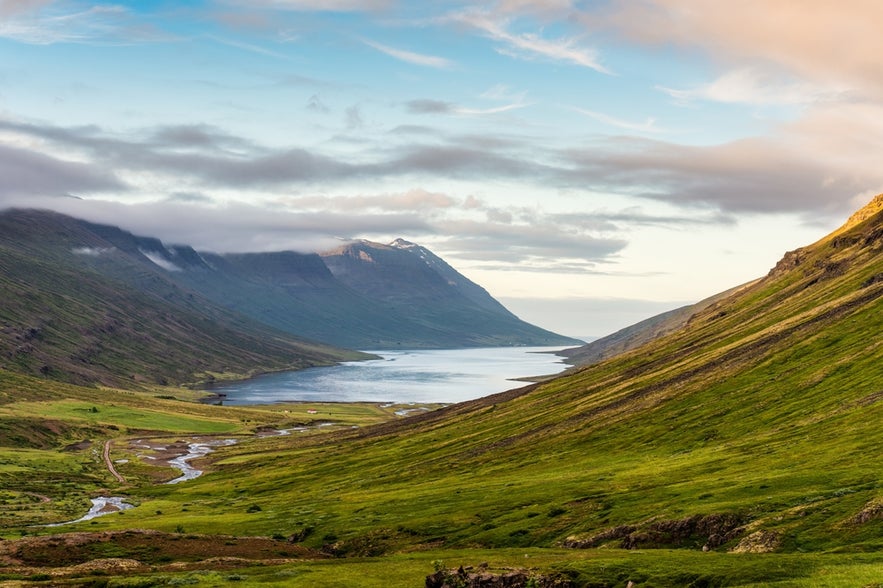 Mjoifjordur Fjord is a great place for tranquil hiking and exploring, and Klifbrekkufossar Waterfall is one of the main highlights to see. It's beautiful from a distance when you can appreciate the whole vision of the waterfalls, plus you can hike to the top.
Mjoifjordur Fjord is a great place for tranquil hiking and exploring, and Klifbrekkufossar Waterfall is one of the main highlights to see. It's beautiful from a distance when you can appreciate the whole vision of the waterfalls, plus you can hike to the top.
From there, you'll be rewarded with panoramic views of Mjoifjordur, a sight that truly encapsulates the wild, unspoiled beauty of East Iceland.
Visiting Klifbrekkufossar Waterfall is an adventure where you'll be surrounded by natural beauty and the tranquil solitude of a remote location. The serenity of the falls and the surrounding landscapes make it a perfect destination for those seeking an immersive encounter with nature.
4. The Giant Boulders of Storurd
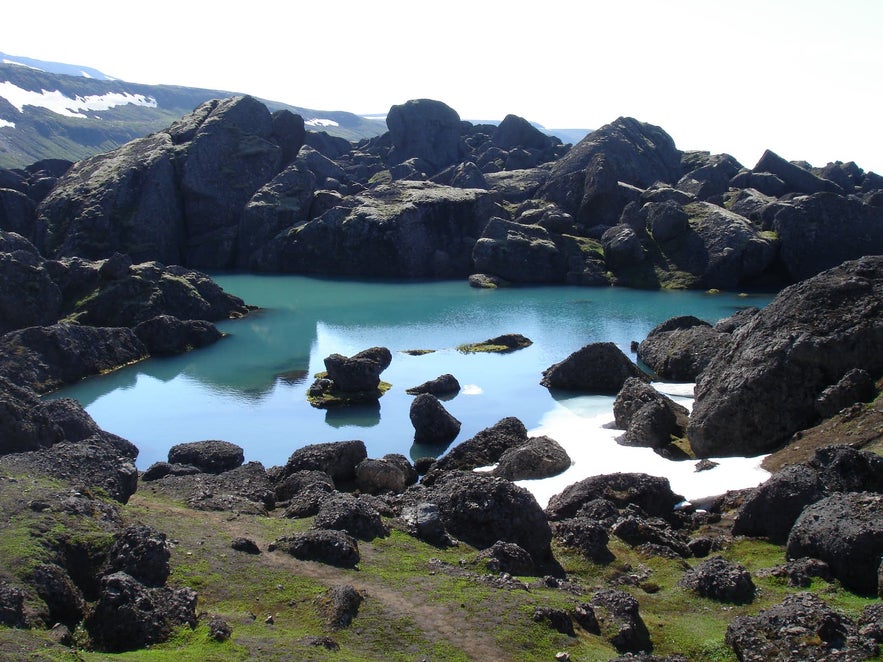 At the base of one of Iceland's most beautiful mountains, Dyrfjoll ("Door Mountains"), one can find the charming sightseeing stop, Storurd ("The Giant Boulders").
At the base of one of Iceland's most beautiful mountains, Dyrfjoll ("Door Mountains"), one can find the charming sightseeing stop, Storurd ("The Giant Boulders").
Sitting dispersed within and around glittering green ponds, enormous natural rock sculptures decorate the scene, culminating in a beautiful hiking environment. With its unearthly terrain and unique ambiance, the Storurd mountain region has numerous hiking trails, making it easy to explore the area’s natural wonders.
The Dyrfjoll Mountains peak at an incredible 3,727 feet (1,136 meters) and are part of a larger mountain range.
The mountains are believed to have formed when an explosive volcanic eruption took place underwater 11-12 million years ago, and a glacier carved out the large and prominent notch at its peak. The Storurd Boulder Area was then likely created in a landslide at the end of the last Ice Age.
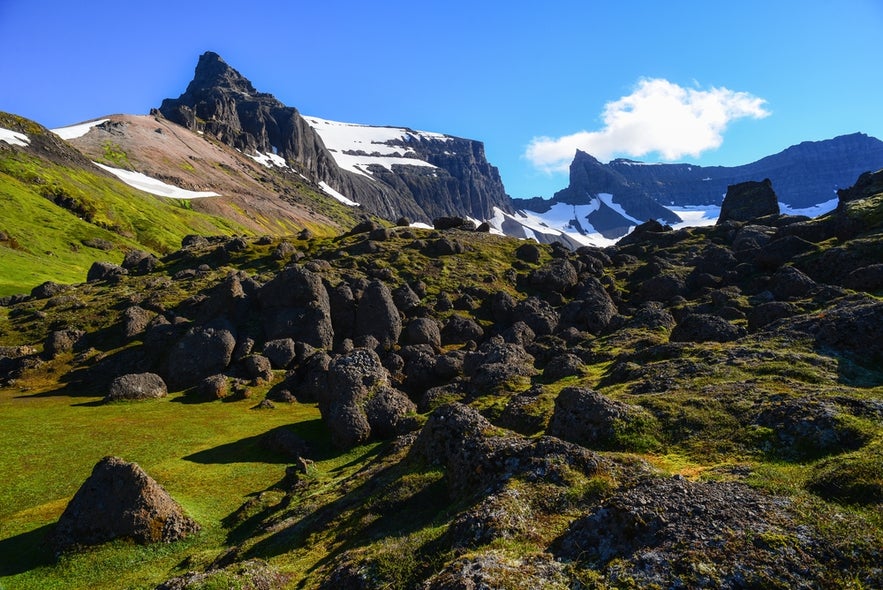 The Dyrfjoll Mountains and Storurd Boulders are iconic attractions in East Iceland that deserve a place on any Iceland itinerary. You can join a hiking tour to the Storurd Boulders with a transfer from Egilsstadir or embark on the hike by yourself.
The Dyrfjoll Mountains and Storurd Boulders are iconic attractions in East Iceland that deserve a place on any Iceland itinerary. You can join a hiking tour to the Storurd Boulders with a transfer from Egilsstadir or embark on the hike by yourself.
Before embarking on any outdoor activities, especially longer hikes, make sure to send in a travel plan at SafeTravel beforehand. This helps rescue services easily locate you in case of an emergency.
You can also see the mountains from a distance with a stop in the fjord of Borgarfjordur Eystri. Another good viewpoint is the charming solar-powered vending machine along Road 701, which is a good place for a short stop.
3. Vatnajokull National Park
 Vatnajokull National Park covers 14 percent of Iceland, making it a difficult stop to miss during an East Iceland tour. The park was officially formed in 2008, merging the smaller Skaftafell and Jokulsargljufur National Parks with the Vatnajokull Glacier, creating the largest national park in Europe.
Vatnajokull National Park covers 14 percent of Iceland, making it a difficult stop to miss during an East Iceland tour. The park was officially formed in 2008, merging the smaller Skaftafell and Jokulsargljufur National Parks with the Vatnajokull Glacier, creating the largest national park in Europe.
Over three times the size of Luxembourg, the 3,127-square-mile (8,100-square-kilometer) glacier, Vatnajokull, is the largest icecap in Europe.
Beneath the ice lies a world of craggy valleys, subterranean lakes, and crevasses. Iceland’s highest peak, Hvannadalshnukur, can be tackled by experienced hikers with a guided glacier and hiking tour.
You can explore the glaciers with beginner-friendly tours, but if you're looking for a challenge, you can take on Iceland’s largest peak with this incredible 15-hour hiking tour.
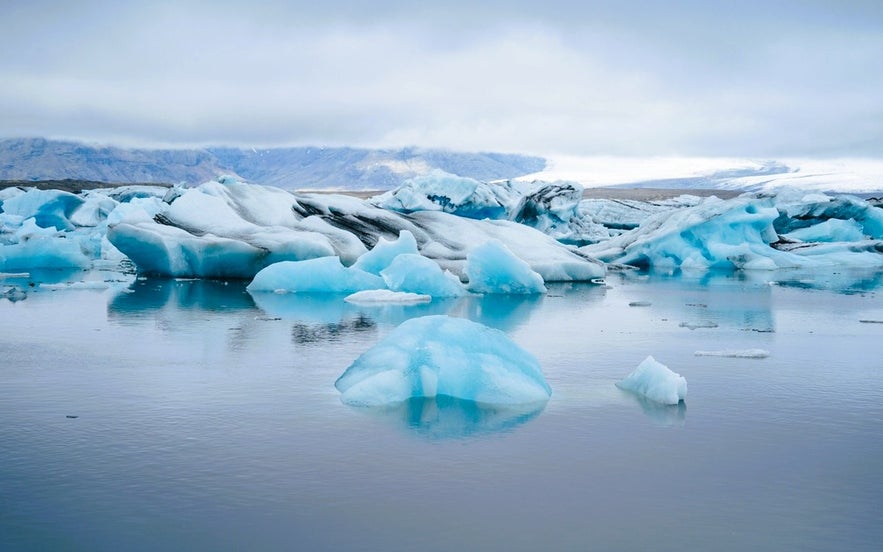 Over 30 outlet glaciers protrude from the ice cap itself, many of which are observable from the Ring Road. One of these observable outlets is Breidamerkurjokull, famous for the ice that breaks off and floats in the Jokulsarlon Glacier Lagoon.
Over 30 outlet glaciers protrude from the ice cap itself, many of which are observable from the Ring Road. One of these observable outlets is Breidamerkurjokull, famous for the ice that breaks off and floats in the Jokulsarlon Glacier Lagoon.
Another is Skaftafellsjokull Glacier, where visitors can stay at a nearby campsite and enjoy fantastic views of the surrounding area. It's also a great starting point for a glacier hiking tour on Vatnajokull.
In the northeast of Vatnajokull National Park, you can find more natural wonders. These include the Dettifoss Waterfall, the most powerful waterfall in Europe, the stunning Asbyrgi Canyon, and the geothermal area of Mt. Namafjall. All of these are also part of the Diamond Circle Route.
- See also: National Parks in Iceland
2. Studlagil Canyon
Nestled in the rugged landscapes of the Jokuldalur Glacier Valley in East Iceland, Studlagil Canyon is a geographical gem. It features magnificent basalt columns that contrast with the vibrant blue waters of the Jokulsa River.
When visiting Studlagil Canyon, you'll be able to see the interplay of volcanic activity and glacial erosion. The columns, a result of an ancient lava flow cooling and contracting into polygonal shapes, showcase Iceland's volcanic past. Meanwhile, the canyon itself owes its existence to the receding glacier that once covered the river.
The dramatic changes in the canyon's appearance under different light conditions make it a favorite for photographers.
 Studlagil Canyon is best reached by following the Ring Road route from the town of Egilsstadir and then heading down Road 923. From there, go down Jokuldalsvegur Road, and you'll soon find a parking lot for the canyon.
Studlagil Canyon is best reached by following the Ring Road route from the town of Egilsstadir and then heading down Road 923. From there, go down Jokuldalsvegur Road, and you'll soon find a parking lot for the canyon.
There are hiking paths along the canyon, and you'll be able to see the beautiful Studlafoss Waterfall in the area.
The best time to access this path is during the summer, ideally with a 4x4 vehicle. If you prefer a guided experience, you can opt for a guided summer tour, which is a fantastic way to explore the canyon.
However, if you're visiting in winter, you can still access Studlagil Canyon with a private sightseeing tour from Egilsstadir, making it an ideal choice for those seeking winter exploration. The tour includes a visit to the Vok Baths with a guided Studlagil Canyon tour, allowing you to relax in the geothermal waters after your adventure.
No matter which way you choose to visit, the Studlagil Canyon is a must-see highlight for any nature lover.
1. Vestrahorn Mountain
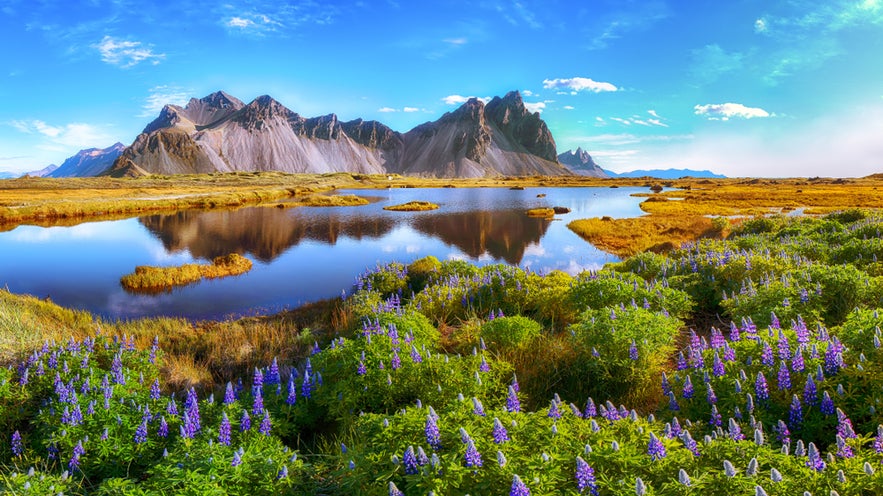 One of East Iceland's "horny" mountains, the picturesque Vestrahorn Mountain can be found along the dark and majestic coastline of the Stokksnes Peninsula. It's 1,450 feet (454 meters) high and is considered to be between 8 and 10 million years old.
One of East Iceland's "horny" mountains, the picturesque Vestrahorn Mountain can be found along the dark and majestic coastline of the Stokksnes Peninsula. It's 1,450 feet (454 meters) high and is considered to be between 8 and 10 million years old.
It's one of Iceland's few gabbro mountains, meaning its origins lie in the hot magma trapped beneath the earth, which slowly cools over time to form a holocrystalline mass.
There's another gabbro mountain just 30.7 miles (49.5 kilometers) further east called Krossnesfjall, but it is usually referred to as Eystrahorn Mountain, and it is also worth a stop on your journey.
Both nature and photography enthusiasts will find Vestrahorn a place of dreamlike surrealism. From its rugged, sharp peaks to the surrounding blue ocean, its dramatic landscape leaves a lasting impression and makes it a must for your East Iceland itinerary.
The mountain is located 7.4 miles (12 kilometers) east of Hofn, a town known for being the "lobster capital of Iceland." There's even a yearly lobster festival in the town, usually occurring at the end of June, that celebrates this delicacy. It's worth stopping for a meal while exploring the area.
 Conveniently, there is a way to immerse yourself in this history (in a 21st-century way) by visiting the old Viking Village Film Set at the root of Vestrahorn. This reconstructed settlement was originally built for a movie and is now open to visitors. The area also features the charming Viking Cafe, where you can enjoy homemade waffles and shop for Icelandic souvenirs.
Conveniently, there is a way to immerse yourself in this history (in a 21st-century way) by visiting the old Viking Village Film Set at the root of Vestrahorn. This reconstructed settlement was originally built for a movie and is now open to visitors. The area also features the charming Viking Cafe, where you can enjoy homemade waffles and shop for Icelandic souvenirs.
The rolling tundra of Vestrahorn makes for an excellent foreground in photography, especially considering how the landscape changes from season to season.
The beach is known for "sneaker waves," which can suddenly surge higher than expected. Exercise caution, as the currents here are strong, and the water is frigid. This same type of wave also famously occurs at the Reynisfjara Beach in South Iceland.
The Icelandic Book of Settlements, or "Landnamabok," also states that one of the first settlements in the country was at the roots of Vestrahorn. The land was claimed by Hrollaugur Rögnvaldsson, son of the Jarl of More in Norway.
- See Also: Vikings and Norse Gods in Iceland
Top 5 Things To Do in East Iceland
 East Iceland offers a mix of breathtaking landscapes, unique wildlife, and rich cultural history. Here are the top five things to do during your visit.
East Iceland offers a mix of breathtaking landscapes, unique wildlife, and rich cultural history. Here are the top five things to do during your visit.
5. Reindeer Spotting
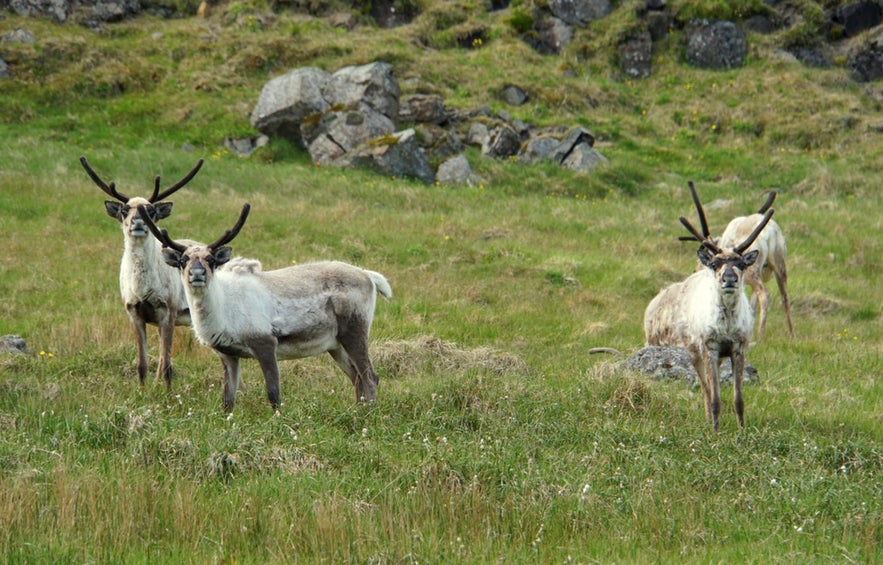 While you'll find natural wonders all over Iceland, there is one feature that makes the Eastfjords unique. It's the only area where you can see reindeer herds roaming the Icelandic countryside.
While you'll find natural wonders all over Iceland, there is one feature that makes the Eastfjords unique. It's the only area where you can see reindeer herds roaming the Icelandic countryside.
Reindeer were first imported from Norway in the 18th century to provide the Icelandic people with fur, meat, clothing, and other resources.
The Icelanders at that time, however, showed no particular interest in the reindeer, leaving them undomesticated and free to live wild across the country. Today, their population, estimated at around 4,000, is condensed to the east and controlled through seasonal hunting.
They can be harder to spot in summer, mostly roaming around the Highlands north of Vatnajokull Glacier. You'll have an easier time seeing them in autumn as they move closer to the lowlands in search of food.
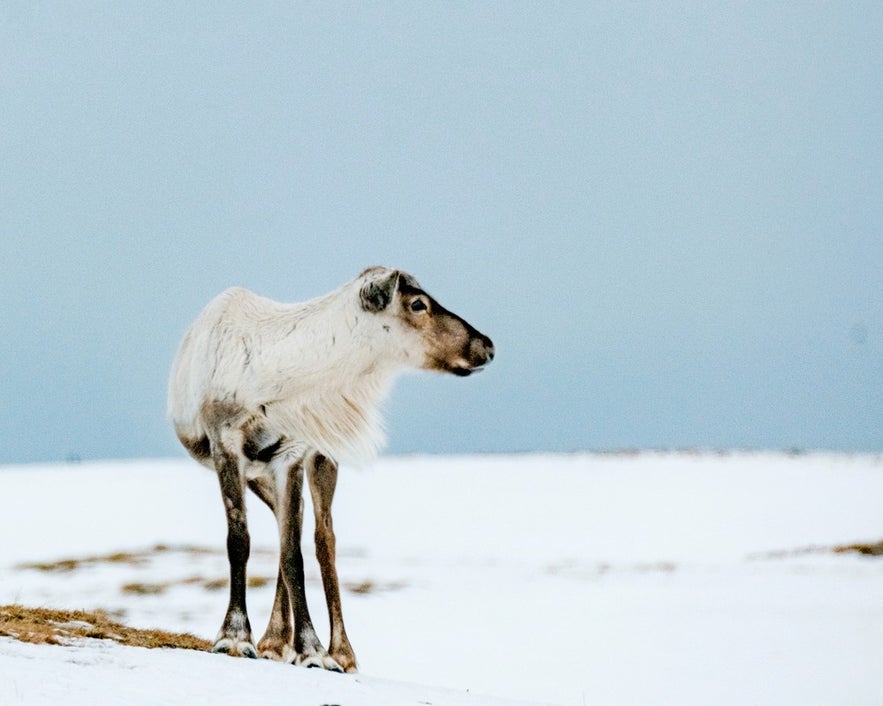 However, winter is the best time to see them, as they stay even closer to human habitation. With luck, you may even see them from the Ring Road!
However, winter is the best time to see them, as they stay even closer to human habitation. With luck, you may even see them from the Ring Road!
You may also be able to spot other animals on the way, like the mink and the delightful Iceland native, the Arctic fox. The Eastfjords, in general, also offer some great locations for spotting puffins.
For a better chance of spotting these animals in the wild, you can rent Icelandic cottages in a remote, nature-filled setting. If you're visiting in winter, you may even be able to spot the northern lights as you'll be away from light pollution.
- See also: Wildlife and Animals in Iceland
4. Visit the Skriduklaustur Center of Culture and History
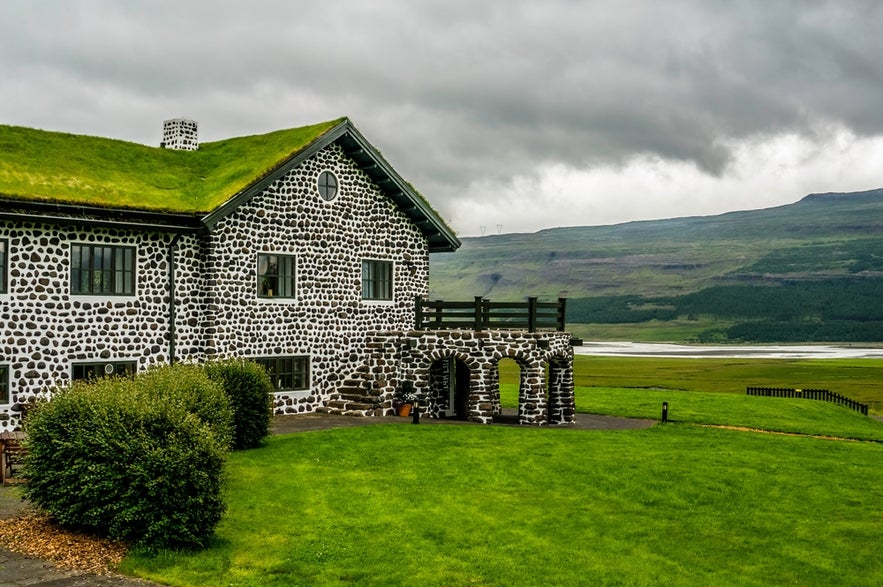 One of the must-visit places in East Iceland is the Skriduklaustur Center of Culture and History, a 25-mile (40.5-kilometer) drive from Egilsstadir. It's the location of the former home of writer Gunnar Gunnarsson (1889-1975) and a significant archaeological site.
One of the must-visit places in East Iceland is the Skriduklaustur Center of Culture and History, a 25-mile (40.5-kilometer) drive from Egilsstadir. It's the location of the former home of writer Gunnar Gunnarsson (1889-1975) and a significant archaeological site.
The mansion was designed by the German architect Johann Fritz Höger and built by Gunnar in 1939 after he had enjoyed a prosperous 30-year writing career in Denmark.
The building style is unique in Iceland and was an enormous project at the time, with over 100 people having worked on it. Gunnar had plans for more buildings in the area that he never started, and in 1948, he moved to Reykjavik and gave the mansion as a gift to the Icelandic people.
Today, Skriduklaustur hosts varied art and history exhibitions, both permanent and temporary, as well as many events throughout the year. Artists can also apply for a 3- to 6-week residency every year and draw inspiration from the unique surroundings. There's also an on-site restaurant that offers lunch and cake buffets.
The major highlight of Skriduklaustur is the archaeological site of an Augustinian monastery. It was founded in 1493 and mostly functioned as a hospital, but it wasn't in operation long, as Iceland underwent a reformation in 1550 and became protestant.
Archaeologists rediscovered the monastery in the year 2000 while researching an old cemetery in the area. What followed was a 10-year research project, during which the site was excavated, and visitors can now explore it.
What makes the visit worth it is that you can walk around the archaeological site with a virtual reality headset that lets you explore a 3D model of the Skriduklaustur Monastery. It's a fantastic way to delve into this period of Icelandic history, which tends to get overlooked.
3. Explore the Wilderness Center
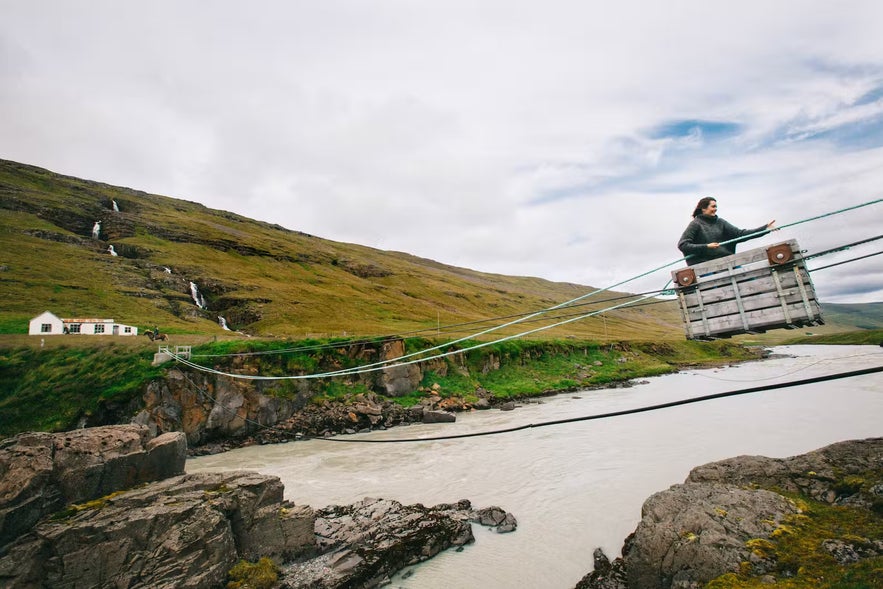 If you want an intimate experience with the remote and beautiful nature of East Iceland, there's no better place for it than the Wilderness Center. Located on the edge of the Highlands in a renovated farmhouse, it offers a getaway to the past that's about an hour's drive away from Egilsstadir.
If you want an intimate experience with the remote and beautiful nature of East Iceland, there's no better place for it than the Wilderness Center. Located on the edge of the Highlands in a renovated farmhouse, it offers a getaway to the past that's about an hour's drive away from Egilsstadir.
While there, you can explore the surrounding natural area by hiking. During guided hiking tours, you can try winching yourself over the Jokulsa Glacial River with a traditional cableway!
You can also go on horseback, like with this horse-riding wilderness tour on Icelandic horses. Alternatively, you can rent a mountain bike or request a super jeep tour.
During your stay, make sure to take a dip in their heated pool and enjoy their sauna and relaxation room. It's the perfect end to a day of exploring.
Check out their historical exhibition, which covers the lives of the past inhabitants of the land and their fight with the surrounding nature.
You can visit the center as a quick stop on your East Iceland itinerary or extend your stay in the Wilderness Center's unique accommodation. They offer shared and private rooms designed to resemble historic houses, including Icelandic turf houses, for an immersive experience.
Following the historical theme, they offer classic Icelandic home-style food made from local ingredients, with one main dinner option that changes daily. You can also request that your food be vegetarian or vegan.
If you're visiting Iceland during the colder months, consider the 2-day Wilderness Center yuletide adventure. You can try Icelandic Christmas cuisine, learn about local customs and folklore, and participate in traditional festivities. You might even spot the northern lights.
2. Discover Petra's Stone and Mineral Collection
 Ljósbjörg Petra María Sveinsdóttir was born on December 24th, 1922, in the village of Stodvarfjordur. From childhood, she nurtured a fascination with the natural world that would define her adult life and lead to one of Iceland’s most unique attractions: Petra's Stone and Mineral Collection.
Ljósbjörg Petra María Sveinsdóttir was born on December 24th, 1922, in the village of Stodvarfjordur. From childhood, she nurtured a fascination with the natural world that would define her adult life and lead to one of Iceland’s most unique attractions: Petra's Stone and Mineral Collection.
Given that “Petra” means ”stone” in Greek, one might say it was destiny that she would dedicate her life to collecting, studying, and surrounding herself with a variety of rocks and minerals. Petra’s devotion to seeking out the most exquisite geological samples meant that she quickly ran out of room in her house to store them.
In the 1950s, Petra began to decorate her garden with stones, quickly attracting the attention of passing travelers who readily asked if they could take a look. Thus, Petra’s private home began to take on a new life as a natural history museum.
Many of those who have visited Petra’s rock collection have been overcome with emotion upon seeing the rocks for the first time. Some have burst into tears, citing the power and healing energy that radiates from the rock garden.
Others say that it has changed their perspective on life. The collection’s guest book is positively filled with stories such as this.
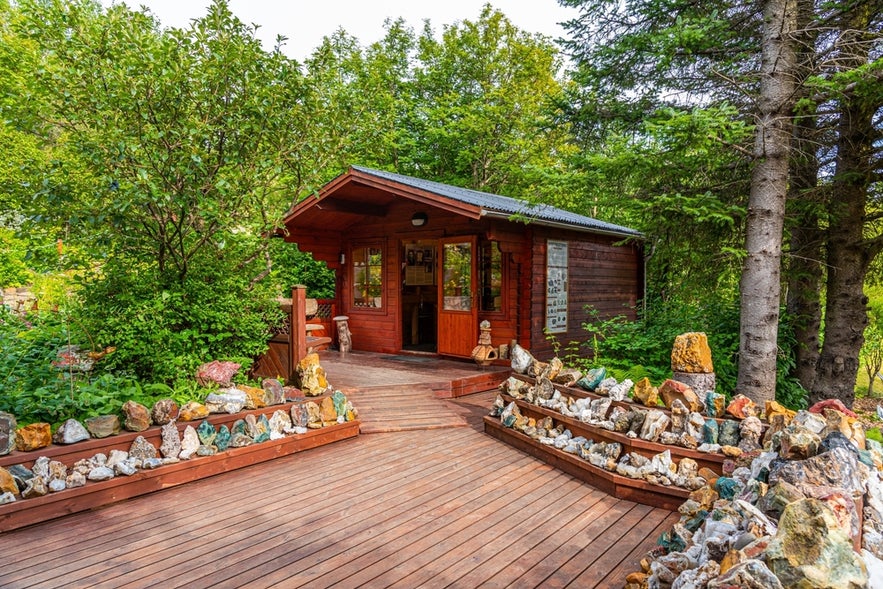 Petra passed away on January 10, 2012, though her memory lives on in her incredible collection and with the thousands that visit it each year. Her beautiful garden is one of the highlights of the Eastfjords, so don't miss out on it during your travels.
Petra passed away on January 10, 2012, though her memory lives on in her incredible collection and with the thousands that visit it each year. Her beautiful garden is one of the highlights of the Eastfjords, so don't miss out on it during your travels.
The Ring Road runs through the town of Stodvarfjordur, making Petra's Stone and Mineral Collection a convenient stop, and you can have a nice lunch break at their on-site cafe. It's open from the start of May to the end of September (10 AM to 4 PM every day), offering tea, coffee, hot soup, and fresh bread.
Whether you're planning to join East Iceland tours or exploring on your own, Petra’s collection is a must-see stop.
- See also: The Nature of Icelanders
1. Unwind in the Vok Baths
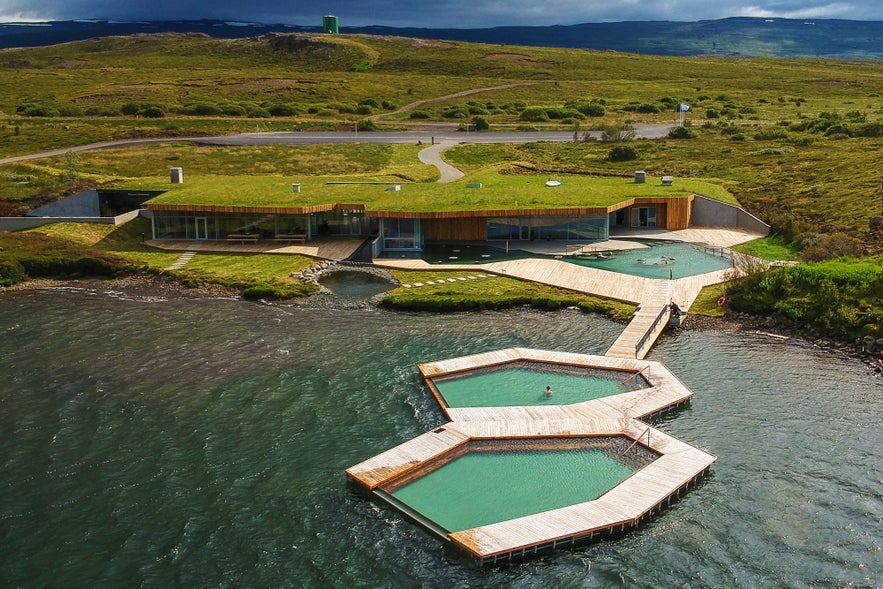
Knowing this, what could be better to include on your East Iceland itinerary than a relaxing and luxurious soak in warm water after a day of adventuring?
The Vok Baths, located in the town of Egilsstadir, is a spa that offers a completely distinctive experience.
You can relax in four pools, with the two unique floating piers standing out as a special highlight of the spa. All four pools vary in temperature, allowing you to customize your visit according to your preference.
Don't miss out on the sauna or the refreshing cold mist tunnel. If you've been hiking a lot or cramped in a car for long periods, you may also want to try the in-water massage.
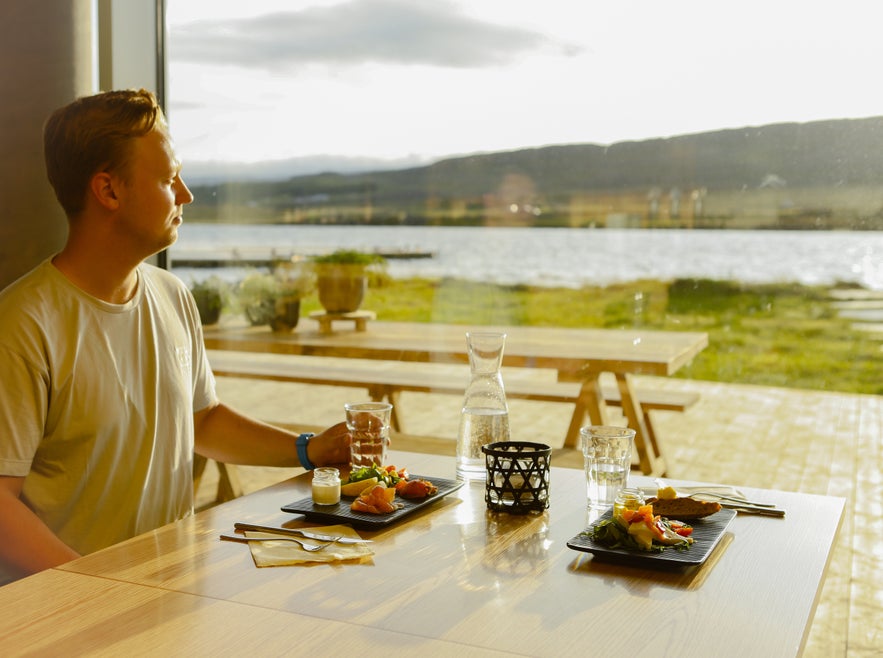
The Vok Baths are open year-round, with each season offering a unique experience:
-
Summer: Best for enjoying the scenic views and unwinding on the floating piers.
-
Spring and Fall: Ideal for catching breathtaking sunsets.
-
Winter: Offers a chance to see the northern lights and enjoy the contrast of chilly air with warm water.
No matter what time of year you're visiting East Iceland, make sure to include a moment of relaxation on your itinerary. It's a popular location, so it's best to book your admission to the Vok Baths early.
- See also: The 30 Best Hot Springs and Geothermal Pools in Iceland
- Learn more: The Best Guide to Fjords in Iceland
Top 5 Towns to Visit in East Iceland
 The East of Iceland features many tiny fishing towns and villages that each have their own unique features and attractions. Here are some that are not to be missed during your Eastfjord journey.
The East of Iceland features many tiny fishing towns and villages that each have their own unique features and attractions. Here are some that are not to be missed during your Eastfjord journey.
5. Djupivogur
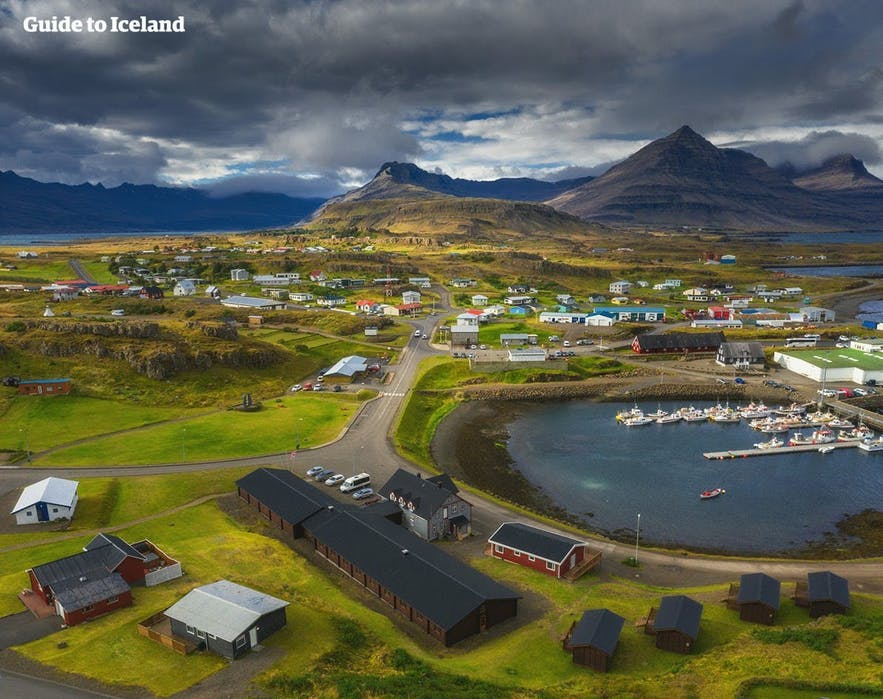 Djupivogur is a quiet town that has a population of just over 400 people. It's located on the Berufjord Fjord and is the perfect spot for admiring the Bulandstindur Mountain.
Djupivogur is a quiet town that has a population of just over 400 people. It's located on the Berufjord Fjord and is the perfect spot for admiring the Bulandstindur Mountain.
The town has a rich history as a trading center that dates back to the 16th century. The oldest still-standing house in the town, Langabud, was a storehouse that now houses a history and art museum. The town is also known for one of its past inhabitants, Hans Jonatan (1784-1827), the first person of color to settle down in Iceland.
 Djupivogur's most iconic attraction is the "Eggs of Gledivik," an outdoor artwork by Sigurður Guðmundsson. This installation features 34 oversized granite eggs, each representing a different bird species native to the area, that line the edge of the harbor.
Djupivogur's most iconic attraction is the "Eggs of Gledivik," an outdoor artwork by Sigurður Guðmundsson. This installation features 34 oversized granite eggs, each representing a different bird species native to the area, that line the edge of the harbor.
Off the coast of Djupivogur, you can go kayaking, like on this two-hour kayaking tour of the Berufjordur Fjord. You can also take a short boat trip to the nearby island of Papey.
This uninhabited isle is home to colonies of puffins, seals, and a rich array of flora. The island’s old wooden church and the lighthouse add a touch of historical allure.
Where To Stay In Djupivogur
 This picturesque town perfectly captures the quiet charm of East Iceland. Make sure to include it as a stop on your journey. To enjoy everything the town has to offer, you can find a variety of accommodations in Djupivogur.
This picturesque town perfectly captures the quiet charm of East Iceland. Make sure to include it as a stop on your journey. To enjoy everything the town has to offer, you can find a variety of accommodations in Djupivogur.
There are great options, like the Berunes HI Hostel, a traditional Icelandic farmhouse that will make for a cozy base for your adventures.
- Learn more: Top 9 Most Famous Icelanders in History
- See more: Where Did Icelanders Come From?
4. Faskrudsfjordur
 The small village of Faskrudsfjordur is sometimes called the French town of Iceland, as it used to be one of the main fishing stations for French sailors in the country. French fishing boats were regular visitors along Icelandic coasts from the year 1614, only coming to an end at the start of the First World War.
The small village of Faskrudsfjordur is sometimes called the French town of Iceland, as it used to be one of the main fishing stations for French sailors in the country. French fishing boats were regular visitors along Icelandic coasts from the year 1614, only coming to an end at the start of the First World War.
The French influence can be felt around the town, as many street names are written in French and Icelandic, and old houses have been restored. Every summer, the town hosts the French Days Festival, one of the top Icelandic festivals celebrating history with music, games, and fun activities.
During your visit, take the time to visit the French Museum, located in an old hospital built by the French. Inside, you can learn about the lives of sailors through a great immersive interactive exhibition. This is an especially fun activity if you're traveling with children.
Faskrudsfjordur is nestled between the mountains and the sea, offering ample opportunities for hiking, bird-watching, and fishing. In the nearby vicinity, you can explore the beautiful waterfalls and rich birdlife.
If you have the time, we recommend taking on the hike to Snaefell Mountain for amazing views of the fjord. With a warm community and engaging history, the quaint town of Faskrudsfjordur offers an enriching atmosphere, making it a must-visit destination in your East Iceland adventure.
Where To Stay In Faskrudsfjordur
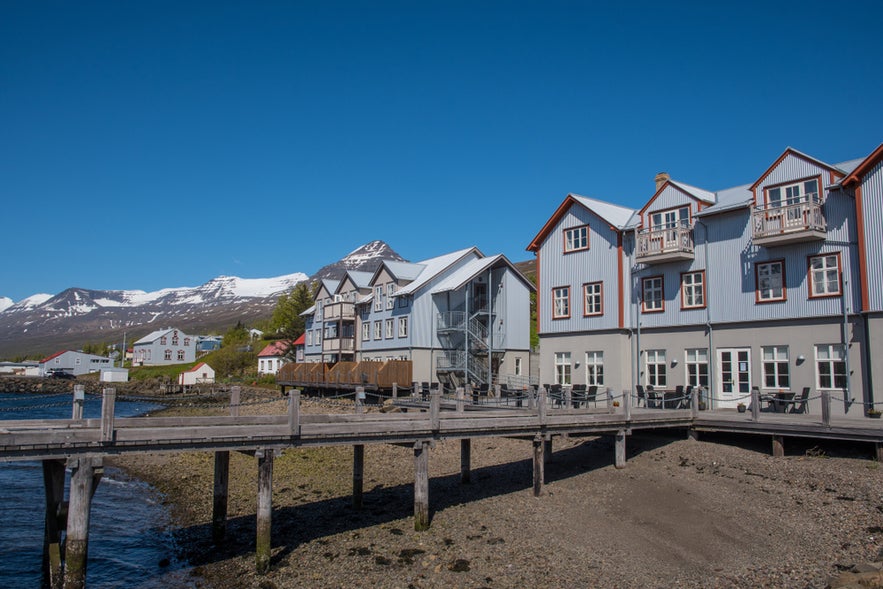 If you want to make Faskrudsfjordur a base for your travels or want to enjoy the small-town charm, you can find a hotel, guesthouse, or other accommodation in the area.
If you want to make Faskrudsfjordur a base for your travels or want to enjoy the small-town charm, you can find a hotel, guesthouse, or other accommodation in the area.
A very special place to stay in the town is the Fosshotel Eastfjords, located in a part of the historic French Hospital building.
3. Borgarfjordur Eystri
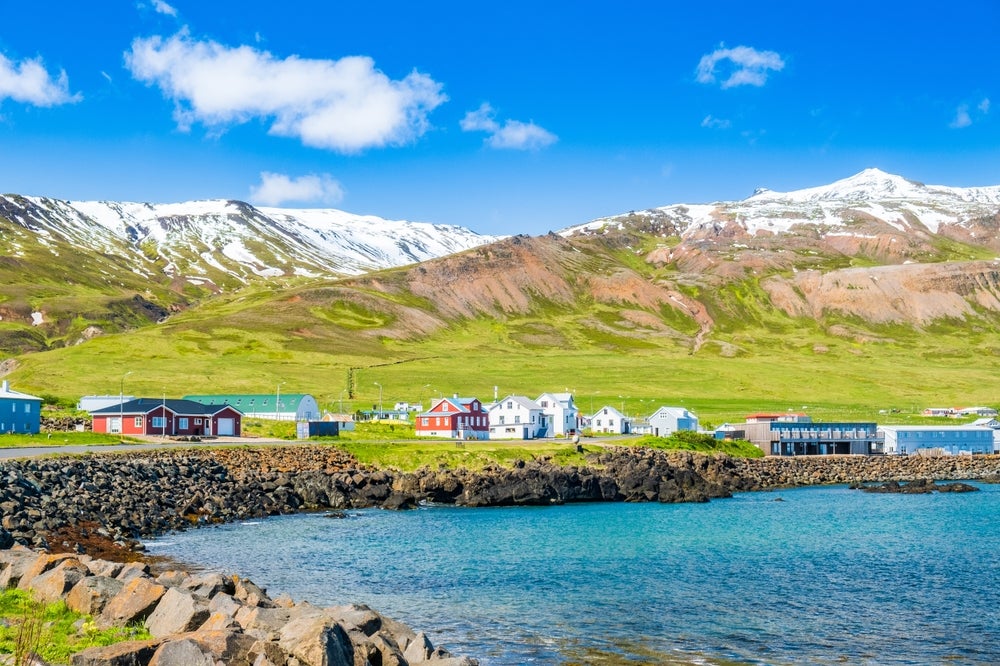 Borgarfjordur Eystri is a fjord in East Iceland, so it's not to be confused with the Borgarfjordur Fjord in West Iceland. The main settlement in Borgarfjordur Eystri is Bakkagerdi, a small village with a population of around 100 people.
Borgarfjordur Eystri is a fjord in East Iceland, so it's not to be confused with the Borgarfjordur Fjord in West Iceland. The main settlement in Borgarfjordur Eystri is Bakkagerdi, a small village with a population of around 100 people.
Surrounded by beautiful mountains, this coastal town is one of the best places to see puffins in Iceland. About 10,000 pairs of puffins nest by the beautiful Hafnarholmi Cliffs every summer, where you can easily spot them.
If you want a closer look at these adorable birds, with their striking beaks and whimsical waddles, you can embark on a puffin tour with a rigid inflatable boat (RIB), where you'll be able to see them from otherwise inaccessible areas.
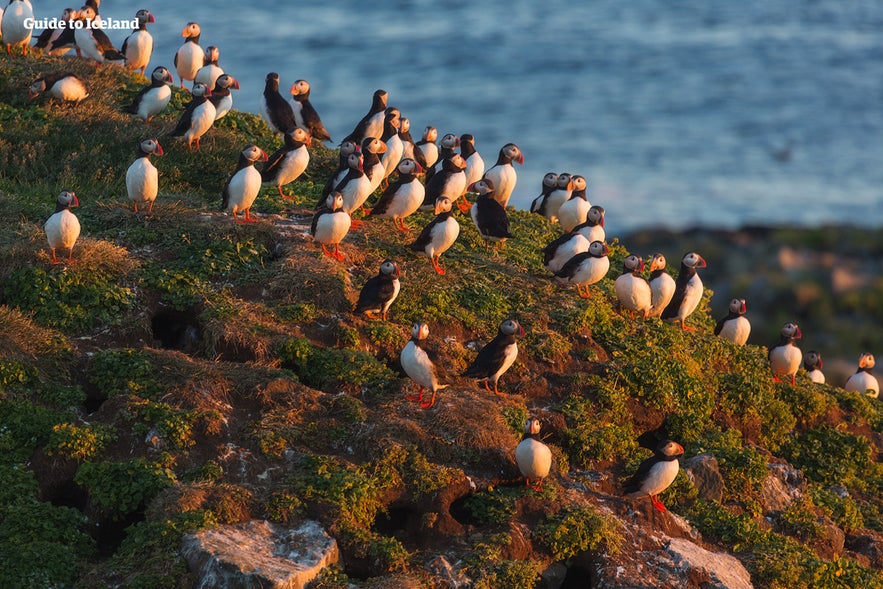 Borgarfjordur Eystri has some of the best-organized hiking areas in Iceland. This includes the hike to the Storurd Boulders and Dyrfjoll Mountains.
Borgarfjordur Eystri has some of the best-organized hiking areas in Iceland. This includes the hike to the Storurd Boulders and Dyrfjoll Mountains.
The village is also located by one of the region's central features, the Alfaborg Rock, where, according to Icelandic folklore, the Queen of Elves supposedly lives.
While you explore the town of Borgarfjordur Eystri, make sure to try the local beer or gin from the KHB Brewery. They're also the only brewery in the country to produce Icelandic moonshine, known as "Landi." This will be most enjoyable if you plan to stay a night in Borgarfjordur Eystri, so you don't have to worry about driving.
Where To Stay In Borgarfjordur Eystri
Make sure to include Borgarfjordur Eystri on your itinerary for its special attractions. Don't miss out on seeing the puffins, the surrounding nature, and the local charm.
You can find great accommodation options in the town of Bakkagerdi, and a truly special one is the Blabjorg Guesthouse. Located in a renovated old fish factory, this modern and comfortable place offers rooms with both private and shared bathrooms, laundry services, and a spa with charming outdoor hot tubs.
2. Seydisfjordur
 The vast majority of those traveling to Iceland for the first time will arrive at Keflavik International Airport in the southwest part of Iceland. However, some will first set their eyes upon the island’s eastern shores when visiting, arriving by ferry to the small fishing town of Seydisfjordur.
The vast majority of those traveling to Iceland for the first time will arrive at Keflavik International Airport in the southwest part of Iceland. However, some will first set their eyes upon the island’s eastern shores when visiting, arriving by ferry to the small fishing town of Seydisfjordur.
The location makes a good base for exploring the Eastfjords, with nearby cafes, restaurants, and tours. You can easily go from Seydisfjordur to see nearby attractions by renting a car, preferably a 4x4 vehicle.
In recent years, Seydisfjordur has become one of the most popular towns in the region. It's known for its great number of well-preserved wooden buildings and its iconic blue church that stands in front of a rainbow-painted street. This town really captures the unique charm of Icelandic culture and history, enhanced by its thriving art scene.
 Art lovers visiting Seydisfjordur should stop by Skaftfell Art Center, the center for art in East Iceland and a haven for the creative community in the area.
Art lovers visiting Seydisfjordur should stop by Skaftfell Art Center, the center for art in East Iceland and a haven for the creative community in the area.
In February, there's also the beautiful "List i Ljosi" Art Festival, dedicated to lighting up the winter darkness.
One additional incentive to include Seydisfjordur on your itinerary is to support the local community, as it has faced difficulty.
In December 2020, a total of 13 buildings were destroyed by the largest landslide to ever hit a town in Iceland. Mercifully, nobody was harmed, but infrastructure was damaged, and some people lost their homes and jobs. What followed was an enormous economic loss and difficulty for locals.
The Technical Museum of East Iceland was hit especially hard, losing many of its artifacts and preserved houses. Since then, the museum has taken on the enormous task of reorganizing and restoring what remains of its catalog.
Today, you can visit the Technical Museum's new exhibitions, one of which is dedicated to the landslide.
Where To Stay In Seydisfjordur
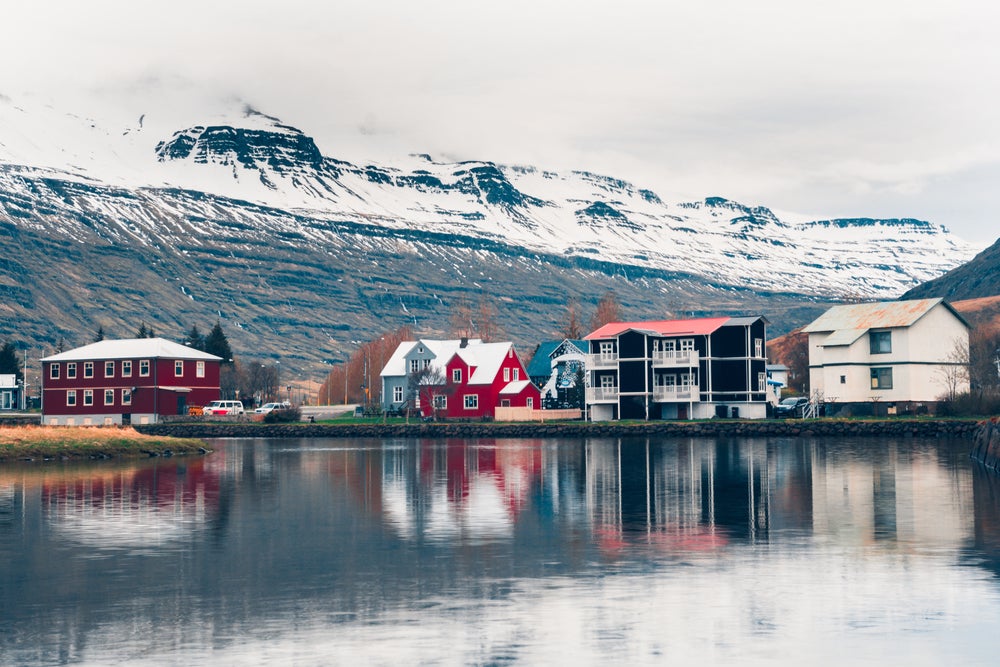 As the town is bustling with activities and is well-located for further Eastfjord day trips, it's a good idea to stay a night or two. You can find many accommodation options in Seydisfjordur, some of which are in charming old traditional buildings that the town is known for.
As the town is bustling with activities and is well-located for further Eastfjord day trips, it's a good idea to stay a night or two. You can find many accommodation options in Seydisfjordur, some of which are in charming old traditional buildings that the town is known for.
A popular option is the Hafaldan HI Hostel, located in a beautiful old hospital building. It offers cozy rooms with modern amenities, and you can choose from affordable shared spaces or private rooms.
1. Egilsstadir
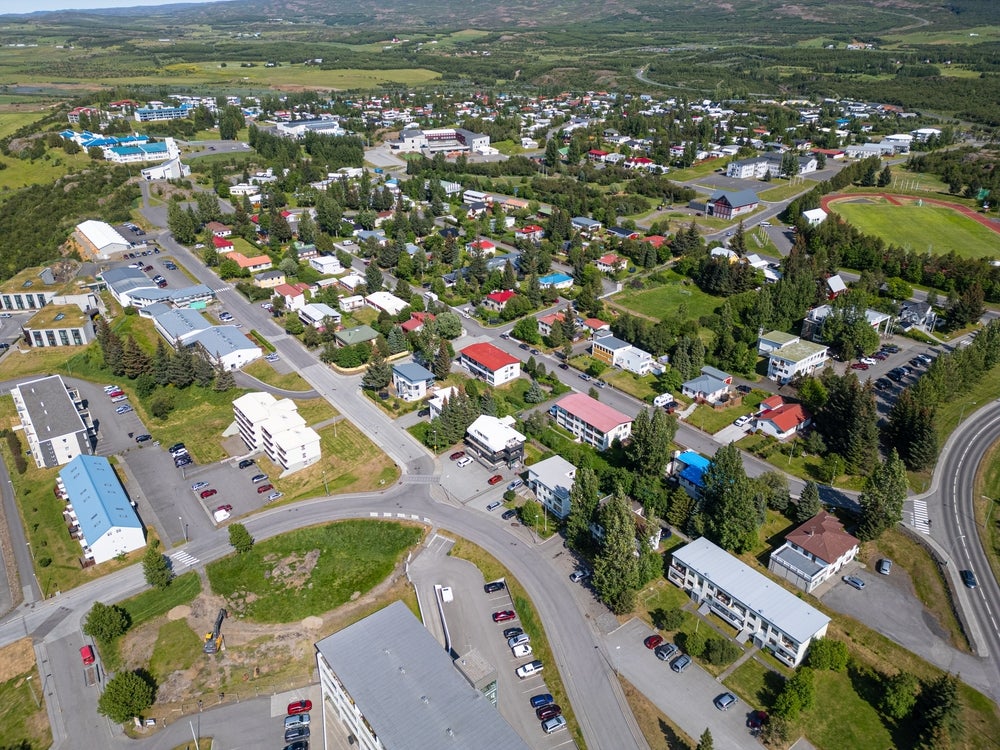 The largest town in East Iceland is Egilsstadir, which offers travelers an array of unique benefits. Its location makes for a great base for exploring the region, allowing you to be more strategic with your travel time when visiting multiple attractions along your East Iceland tour.
The largest town in East Iceland is Egilsstadir, which offers travelers an array of unique benefits. Its location makes for a great base for exploring the region, allowing you to be more strategic with your travel time when visiting multiple attractions along your East Iceland tour.
The town of Egilsstadir is just a 6.7-mile (10.9-kilometer) drive from Lake Lagarfljot and Hallormsstadarskogur Forest. It's also a 35.2-mile (56.7-kilometer) drive from the Wilderness Center, making day trips easier for your East Iceland itinerary.
You can take tours, like this hiking tour of Snaefell Mountain or this waterfall trail hike from Egilsstadir! After a day of exploring, you can unwind in the luxurious Vok Baths, just a 3.5-mile (5.7-kilometer) drive from the town center.
 Egilsstadir is also worth exploring, as you can step into the history of the region at the East Iceland Heritage Museum. You can then visit the Snaefellsstofa, the visitor center for the eastern part of Vatnajokull National Park, which includes a great nature exhibition.
Egilsstadir is also worth exploring, as you can step into the history of the region at the East Iceland Heritage Museum. You can then visit the Snaefellsstofa, the visitor center for the eastern part of Vatnajokull National Park, which includes a great nature exhibition.
Find unique souvenirs at local handicraft stores and enjoy a meal at nearby cafes and restaurants. For a unique activity, try an exciting axe-throwing tour on the outskirts of Egilsstadir, the perfect outlet for pent-up stress.
Where To Stay In Egilsstadir
When planning your East Iceland trip, you can find many accommodation options in Egilsstadir. The town has essential services, a domestic airport, and a prime location on the Ring Road.
The Hotel 1001 Nott is a good accommodation option, offering modern rooms with beautiful views over Lake Lagafljot. It also has an on-site restaurant and bar, as well as outdoor hot tubs.
- Learn more: Top 9 Things To Do in Egilsstadir
- See more: 12 Towns To Visit in Iceland’s Eastfjords
- See also: Top 6 Restaurants in East Iceland
Frequently Asked Questions About East Iceland
Planning a trip to East Iceland? Below are some commonly asked questions to help you make the most of your visit to this beautiful region of Iceland.
Is East Iceland Worth Visiting?
Yes. East Iceland offers breathtaking landscapes, unique attractions, and a rich cultural history, making it worth a visit. From dramatic fjords and towering mountains to picturesque villages, there’s plenty to explore.
What Highlights in East Iceland Should I Visit?
East Iceland has several breathtaking destinations, including Vestrahorn Mountain, Studlagil Canyon, Vatnajokull National Park, and the Wilderness Center. You can also explore unique towns like Egilsstadir, Seydisfjordur, and Borgarfjordur Eystri.
How Many Days in Iceland Are Enough?
For a thorough experience of Iceland's major attractions, 7 to 10 days is ideal. If you're focusing on East Iceland, 4 to 5 days should be enough to explore the key sights and natural beauty of the region.
What Is the Most Popular City To Stay in East Iceland?
Egilsstadir is the most popular town to stay in East Iceland. It serves as a central hub, offering easy access to nearby attractions, accommodations, and services, making it a great base for exploring the region.
Embrace the Untamed Beauty of East Iceland
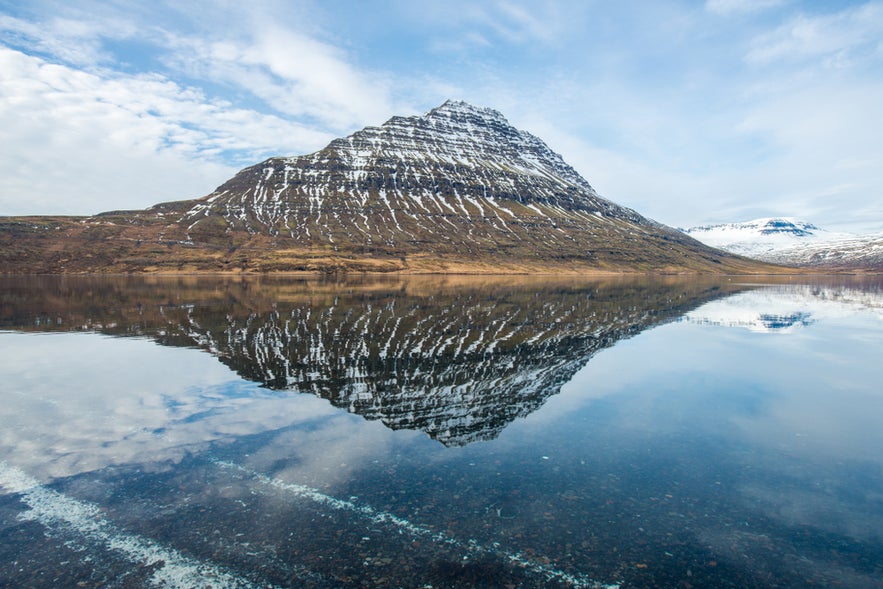 East Iceland offers a unique escape from the crowds, showcasing stark contrasts and serene beauty. From the dramatic Vestrahorn Peaks to the hidden Laugavellir Geothermal Springs, the diverse landscapes offer both adventure and tranquility.
East Iceland offers a unique escape from the crowds, showcasing stark contrasts and serene beauty. From the dramatic Vestrahorn Peaks to the hidden Laugavellir Geothermal Springs, the diverse landscapes offer both adventure and tranquility.
Ready to embark on your East Iceland adventure? Explore Guide to Iceland's wide selection of East Iceland accommodations. Discover a variety of tours, like this 11-day self-drive tour, which visits the East Fjords, or this 10-day self-drive tour of the Ring Road. Start planning your unforgettable journey today!
What are you most excited to see in East Iceland? Have you experienced the East Fjords before? Share your questions and travel plans in the comments below!



